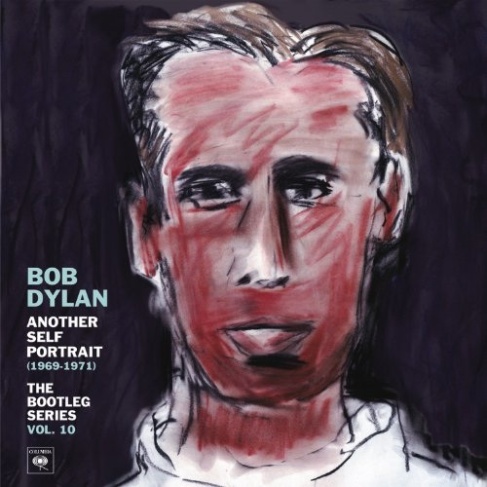The critics have come full circle on Bob Dylan’s Self-Portrait period. When the original album appeared in 1970, Greil Marcus’s Rolling Stone review summed up their bewilderment and disdain with its much-quoted opening line: “What is this shit?” Now we have Another Self-Portrait, a collection culled largely from the same sessions, which is being called “one of the most important, coherent, and fulfilling Bob Dylan albums ever released” (David Fricke in the same publication).
If you ask me, this is a prime example of the tendency of many critics to deal in extremes. In fact, while the first Self-Portrait was indeed a major disappointment, with its uneven performances and dearth of original material, it also proved interesting throughout and intermittently satisfying. As for the 35-track, two-CD Another Self-Portrait (1969–1971): The Bootleg Series, Vol. 10—which combines outtakes from Nashville Skyline, New Morning, and Self-Portrait with previously unheard live and studio material—it is mostly terrific, consistently revealing, and essential for Dylan fans. But I wouldn’t put it on a par with, say, Blonde on Blonde or Blood on the Tracks.
Among the biggest reasons to buy the record are its alternate versions, many of which showcase stripped-down instrumentation and winningly intimate vocals. From the sessions for the often-underrated New Morning come a potent recording of its title cut that prominently features horns and two readings each of “Time Passes Slowly” and “Went to See the Gypsy” (one with Dylan on electric piano). You’ll also find a violin-enhanced “If Not for You” and an excellent “Sign on the Window” with strings. Even the flops are fascinating: Dylan plays it straight in “If Dogs Run Free,” which doesn’t work nearly as well as the jazzy, tongue-in-cheek version he ultimately issued on New Morning.
The Nashville Skyline outtakes here—“Country Pie” and “I Threw It All Away”—represent smaller departures from the renditions we already know. Still, they’re strong recordings that fans will want to hear.
Among the biggest reasons to buy the record are its alternate versions, many of which showcase stripped-down instrumentation and winningly intimate vocals.
From the original Self-Portrait come stripped-down (no overdubs) recordings of originals like “All the Tired Horses” and “Wigwam.” There are also about a dozen traditional and other tunes, including several that appeared in other versions on Self-Portrait. Among them: a much-improved “Copper Kettle,” with great accompaniment by David Bromberg and Al Kooper, who add much to many of the other tracks as well; the beautifully sung “Pretty Saro”; and a sublime “Spanish Is the Loving Tongue.”
Also here are excellent, previously unheard renditions of originals like “When I Paint My Masterpiece” and a pair of tunes from Dylan’s early Greenwich Village contemporaries: Tom Paxton’s “Annie’s Going to Sing Her Song” and a reading of Eric Andersen’s classic “Thirsty Boots” that fits Dylan so well you’ll think he could have written it.
From Dylan’s 1969 Isle of Wight concert with the Band, which was represented on the original Self-Portrait by four tracks, come “Highway 61 Revisited” and “I’ll Be Your Baby Tonight.” (If you want the entire 17-track Isle of Wight show as well as a remaster of Self-Portrait, you can opt for a ridiculously overpriced four-disc deluxe version of this collection.)
To be sure, it’s a varied lot and like the first Self-Portrait, a bit of a mishmash. But it’s a higher quality mishmash, with more originals and more memorable covers. And now that we have such albums as New Morning and Planet Waves, not to mention Good as I Been to You and World Gone Wrong, it seems less out of left field. You’ll find many intriguing clues here to Dylan’s direction, tastes, and work habits.
But don’t expect those clues to solve all the mysteries of Dylan’s early-1970s period. Remember, this is a guy who painted ostensible self-portraits for the covers of both this album and its predecessor, neither of which looks remotely like him. But what did you expect from someone who’s been reinventing himself for half a century?

Thanks for your insightful review. You’re right about tendencies of critics to go to extremes, with the only effect that their reviews become less interesting and less informative. Your review is a good example of another approach!
LikeLike
Greaat post thank you
LikeLike
[…] to result in the sort of wholesale reappraisal that Self-Portrait underwent after the release of The Bootleg Series, Vol. 10: Another Self Portrait (1969–1971). Some of these arrangements still seem to make little sense—even some that sound […]
LikeLike
[…] to result in the sort of wholesale reappraisal that Self-Portrait underwent after the release of The Bootleg Series, Vol. 10: Another Self Portrait (1969–1971). Some of these arrangements still seem to make little sense—even some that sound […]
LikeLike